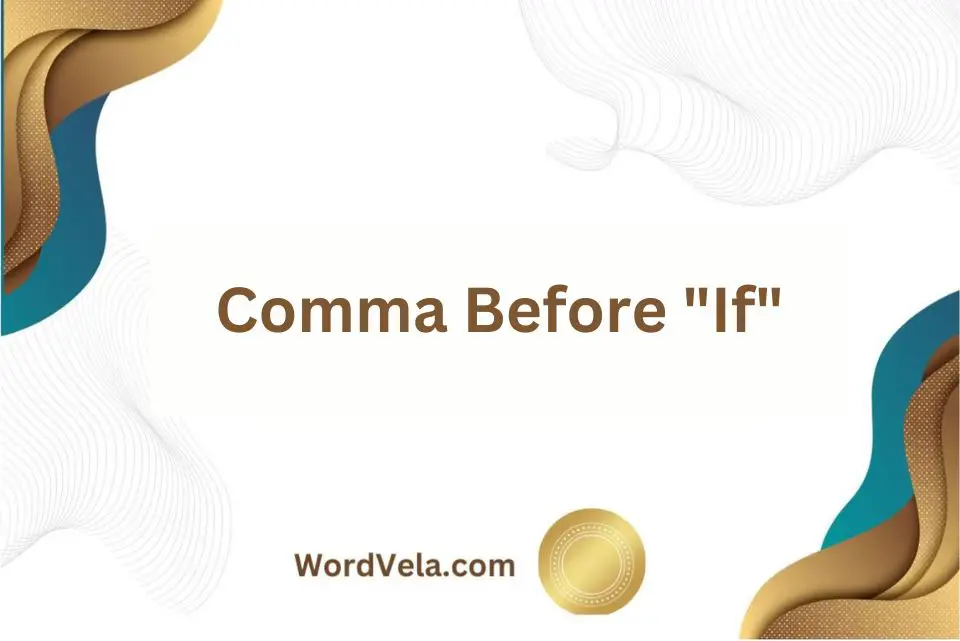Comma Before Along With: Is there a comma before “along with”? Yes, when you are using “along with” to add extra information in a sentence, you do not need a comma before it.
This phrase is known as a compound subject and should be treated similarly to other coordinating conjunctions like “as well as.”
Remember, clarity and consistency in your writing style are key when deciding whether or not to include a comma before “along with.”
Table of Contents
Is There a Comma Before Along With:
You don’t necessarily need a comma before “along with” in every situation.
Here’s the breakdown:
No comma: When “along with” acts as a prepositional phrase within the sentence, a comma usually isn’t required.
Comma: However, a comma can be helpful in a few situations:
Clarity: If the phrase following “along with” is long or complex, a comma can improve readability by setting it apart.
When to Use a Comma Before With?
You generally don’t need a comma before “with” in most cases.
Here’s why:
Function of “with”: “With” often acts as a preposition connecting nouns or pronouns. Since it’s introducing part of the core structure of the sentence, it usually doesn’t require a comma for separation.
- Example: I went to the store with my friend. (“With my friend” tells you who you went with.)
Sentence Flow: Commas help with reading flow by indicating pauses. If the sentence with “with” flows naturally without a comma, it likely doesn’t need one.
Does Comma Go Before or After Alongside?
A comma before “alongside” depends on how it’s used in the sentence.
Here’s the breakdown:
No comma:
Within the sentence: When “alongside” functions as a prepositional phrase within the sentence, it usually doesn’t need a comma.
Comma:
There are a few situations where a comma can be helpful for clarity or emphasis:
Clarity: If the phrase following “alongside” is long or complex, a comma can improve readability by setting it apart.
Synonyms for “Along With”
| Context | Synonym | Example |
|---|---|---|
| Introducing accompanying items/people | together with, besides, in addition to, as well as | She brought her laptop along with a notebook and pen. |
| Introducing additional information | furthermore, moreover, additionally, what’s more | We need to consider the environmental impact, along with the potential social and economic benefits of this project. |
| Highlighting something mentioned previously | too, even | He was a skilled negotiator, along with being a brilliant strategist. |
| Starting a sentence | In addition, Besides, On top of that | Along with my friends, I decided to volunteer at the animal shelter. |
Can You Start a Sentence with “along”?
Yes, you can start a sentence with “along”! It can be a creative way to set the scene or introduce an action in a narrative.
Here’s why it works:
Flow and Pacing: “Along” can create a sense of movement or continuity, propelling the reader forward into the sentence.
Suspense: Starting with “along” can introduce a sense of mystery or anticipation about what’s happening.
Description: “Along” can also be used descriptively to set the scene.
How Do You Use Along with A Preposition in A Sentence?
“Along with” itself functions as a prepositional phrase, so you wouldn’t typically use it with another preposition. However, it can be used within a sentence that includes other prepositions.
Here’s how it works:
“Along with” introducing accompanying items/people:
Preposition following “along with”: You can use a preposition after “along with” to specify the location or relationship between the accompanying items/people and the main subject.
Prepositional phrase following “along with”:
You can use a prepositional phrase after “along with” to provide more detail about the accompanying items/people.
What Is the Difference Between Along with And Together With?
| Feature | Along With | Together With |
|---|---|---|
| Meaning | In addition to, accompanying | Working or acting jointly |
| Emphasis | Less emphasis on the joint action or association | More emphasis on the collaboration or unity |
| Use with | Can be used with items or people | Primarily used with people |
| Formality | More casual | Can be formal or informal |
| Example | Sentence | Sentence |
|---|---|---|
| Items | She brought her phone along with her charger. | |
| People | They went for a walk along with their dog. | The children together with their parents built a sandcastle. |
| Emphasis | He was a brilliant scientist, along with being a talented musician. (Less emphasis on the dual talents) | They together with their team won the championship. (More emphasis on the collaborative effort) |
Conclusion and Final Thoughts!
The general consensus among grammar experts is that using a comma before “along with” is not necessary. While some style guides may suggest otherwise, the prevailing view supports omitting the comma to maintain clarity and flow in sentences.
Remembering this simple guideline can help you confidently structure your writing and avoid unnecessary punctuation errors. By following established conventions and focusing on clear communication, writers can effectively convey their message without getting caught up in debates over minor grammatical nuances.
Ultimately, whether to include a comma before “along with” boils down to personal preference and adherence to specific style guidelines.
As language evolves, so too do punctuation rules; however, for now, it seems safe to skip the comma when using “along with” in your writing.










Leave a Reply